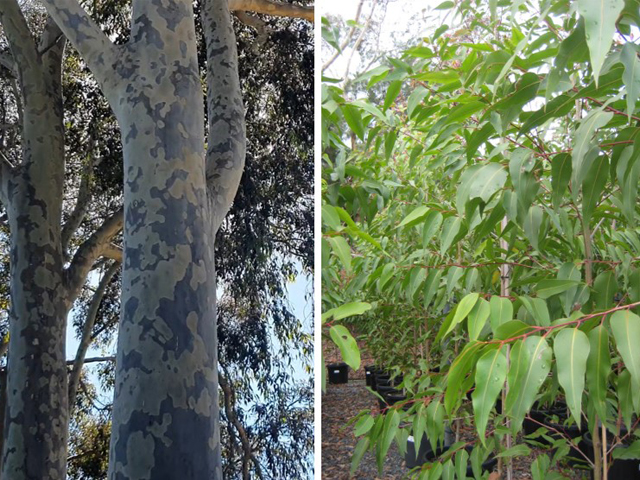SHADE TREES FOR FARMS AND PADDOCKS
08 Apr 2021
Speciality Trees stock a range of high-quality and affordable trees that provide shade for farms and paddocks.

Image via Stock & Land magazine
Speciality Trees know that trees are the cheapest method of providing shade on farms and paddocks as a way to manage comfort in livestock, horses and local habitat during the hotter summer months. Planting advanced trees leading into winter will increase success rates and optimises tree size in readiness for summer heat.
Not only do trees increase local biodiversity, they also reduce radiant heat load by 50 percent or more.
Planting trees in conjunction with smaller shrubs as undergrowth to create tree belts will also provide shade and protection from winds, allowing for better control over livestock heat loads. This also helps farms to become a more comfortable workplace, or home, for people as well. Strategically planted, trees assist with erosion management and salinity control.
The selection of suitable trees for shade on paddocks in this often harsh and dry environment often comes down to Australian natives, including:
Lophostemon confertus

A rainforest tree native to North-Eastern parts of Australia, this is a fast-growing tree which is rarely affected by pests and diseases. Dome-like in shape, it develops a very dense foliage cover of dark-green, leathery leaves providing good shade for the summer months.
Corymbia citriodora

A beautiful, tall growing tree with a distinctive, often powdery white to grey coloured bark which curls and flakes off in spring. Its leaves are green, long and slender with an amazing, strong lemon fragrance when crushed.
Corymbia maculata

This is a stately tree which grows straight and tall. The bark sheds in summer and is smooth and cream in colour with grey spots from the older bark, providing contrast and interest with its mottled appearance.
Angophora costata

This attractive Australian native tree is loved for its smooth bark, twisted limbs and large expanded trunk base. It bears white flower clusters in spring. This tree has opposite leaves compared to alternate leaves as seen in eucalypt tree varieties.
Eucalyptus polyanthemos

This Australian native tree naturally occurs on the tablelands of New South Wales and is capable of tolerating difficult, dry stony soils. Juvenile foliage is oval in shape and grey-green in colour whilst the mature, adult leaves are more ovate.
Eucalyptus mannifera maculosa

A lovely medium sized tree for open spaces with a smooth powdery white, cream or grey trunk with red flecks through it. It naturally forms one trunk with a wide spreading canopy. It is adaptable to a wide range of conditions, and is known to tolerate poor soils such as clay and shallow, rocky soils.
Eucalyptus sideroxylon rosea

This Australian native tree is indigenous to eastern Australia. It has distinctive, very dark brown to black coloured bark which is deeply furrowed and does not shed. This tree creates a great habitat for native fauna and is a valuable source for honey production.
Eucalyptus melliodora

This tree is a medium to tall grower, best known for its unusual bark which varies from smooth to rough all the way down the trunk. Often the bark varies presenting an array of colours including grey, yellow, red and brown and occasionally, can be very dark and rough.
Find out how Speciality Trees can help you with your next project via the links below.







